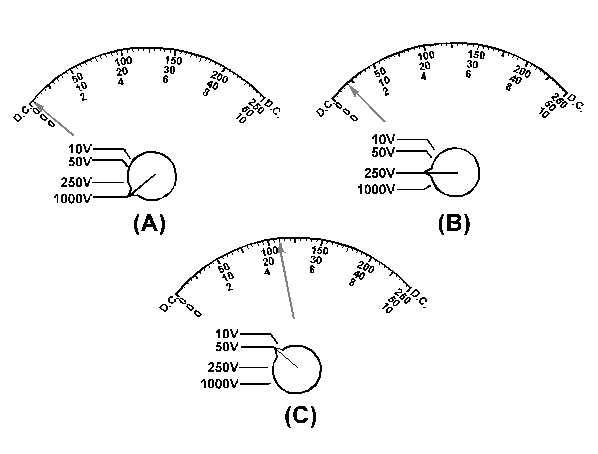1-31
Figure 1-30.—Reading a voltmeter at various ranges.
In figure 1-30(A) the meter is in the 1000-volt range. The pointer is barely above the 0 position. It is
not possible to accurately read this voltage. In figure 1-30(B) the meter is switched to the 250 volt range.
From the pointer position it is possible to approximate the voltage as 20 volts. Since this is well below the
next range, the meter is switched, as in figure 1-30(C). With the meter in the 50-volt range, it is possible
to read the voltage as 22 volts. Since this is more than the next range of the meter (10 volts), the meter
would not be switched to the next (lower) scale.
Q34. How is it possible to use a current sensitive meter movement to measure voltage?
Q35. What is voltmeter sensitivity?
Q36. What method is used to allow a voltmeter to have several ranges?
Q37. Why should you always use the highest range when connecting a voltmeter to a circuit?
ELECTROSTATIC METER MOVEMENT
The final meter movement covered in this chapter is the ELECTROSTATIC METER MOVEMENT.
The other meter movements you have studied all react to current, the electrostatic meter movement reacts
to voltage.
The mechanism is based on the repulsion of like charges on the plates of a capacitor. The
electrostatic meter movement is actually a large variable capacitor in which one set of plates is allowed to

